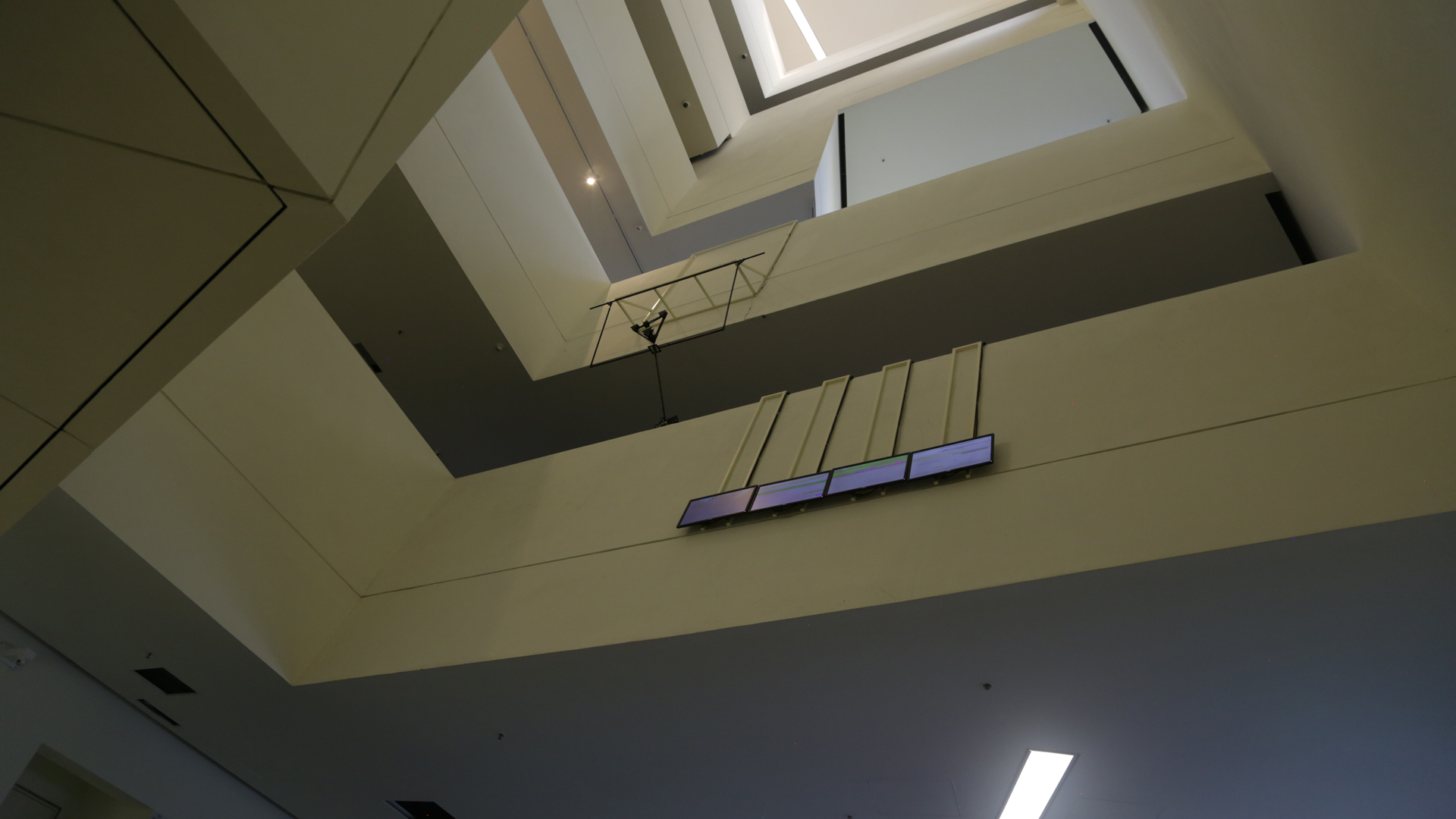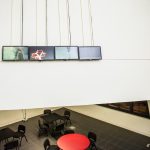“Ecstasis I” by Aline Biasutto
Title:
- Ecstasis I
Artist(s) and People Involved:
Exhibiting Artist(s):
Symposium:
- ISEA2016: 22nd International Symposium on Electronic Art
-
More artworks from ISEA2016:


Venue(s):
Creation Year:
- 2005-2014
Medium:
- 4-channels video
Size:
- 6'14"
Artist Statement:
Ecstasis I is a video on 4 screens featuring the correlations between film, the war and the rides in the amusement parks and the logistics of perception in popular culture.
The rides are framed, cut: only appear on the screen some parts, fragments of the machines operating in the sky. These vessels, these articulated arms of catapults, these spears, those big wheels, trimmed with electric colored lights moving in the sky sometimes as a hypnotic tool, sometimes as a menacing machine, then sink into the hors-champ. We distinguish on some pictures, the body of viewers taken in the movement of the machine. Footages of the First and Second World War are juxtaposed to these images that evolve to a contemplative, hypnotic pace. These extracts from a documentary show the handling of weapons: machine guns, artillery and other guns. The soldiers come in. They no longer suffer the movement but they initiate it. The mechanisms of these war machines fit directly related to those used in the manufacture of rides.
Modeled colored 3D images are displayed on a fourth screen. Here the camera is subjective, the viewer becomes an actor, he holds the weapon, it has a viewfinder, advance in a reinvented and reconstructed space. The weapons are fake, the target is not defined. Everything becomes purely virtual although the images are recreated from archival images of the First World War.
Then, an explosion of colors animates the screens. abstract images, lines and shapes on the projected surfaces. Inspired by the lost files, corrupted by the machine, the virus invades the movie screens. The image transformed by the computer that failed, destroyed and sunk becomes another image that does not convey anymore information. This animation imposes a different pace to the work. The rhythm of the images is accelerating with the modernity of proven mechanisms. A series of still images, in black and white and in color from archival footage, traces the history of optics taking as a starting point the eye, dissected and diagrammed organ. The history of photography and film, from analog to digital is thus traced through this series of jerky images. Then these optical-related pictures give way to the weapons of the First and Second World War. Subliminal images of a memory, they show a rapid evolution of optical and correlations between vision, entertainment and war.
Continuing the reflection of Paul Virilio in his text “War and Cinema – Logistics of Perception” (1984), published in Cahiers du Cinema, where the author draws a parallel between the manufacture of weapons and those of optical tools, are added movements and forms of the rides amusement parks: the Ferris wheel, spear, catapult, rocket … the park was the first time in history where entertainment puts the body of the spectator in motion, using the same mechanics that arms and discoveries in optics. Thus, amusement parks are the first democratic space where every class is alongside the other. There is no difference in class on the rides unlike means of transport, the ride is the space where a person of the middle class can touch, brushing against a person of the working class, where people of different social classes are in the same area embedded into the same entertainment movement. They have the same experience in the same conditions. This democratic space is also an important concept in the concepts in Ecstasis I. In fact, the photograph appears as an accessible art medium: anyone can buy a camera from the 60s and become a photographer, make art without being part of an elite. Family, traveling, in his everyday life, photography saves fragments of reality and stages them in the frame. Finally, the war is a means for democracies to impose democracy to countries subject to other policies. War becomes a non-democratic means to impose democracy. This questioning of the war and democracy is led by Judith Butler, in particular in his book “Precarious Life: The Powers of mourning and violence” (2004).
Finally, Ecstasis I creates a hypnotic microcosm where fascination combines with fear and war becomes a menacing spectacle. Exploring the history of photography, and the association with the history of the manufacture of weapons, it highlights the dematerialization of two techniques: photography becomes digital, supports getting smaller, dematerialized while images of war are no longer shown. This video work questions the systems for recording images and paperless media. Once the digital images can be corrupted by the machine, destroyed, that there remains a culture? What images do we keep?
Ecstasis I is the first chapter in a series of works exploring the relationship between the images of war and the spectacle, the representation of war given to public through the media and issues of perception of these images and of the political climate and the consequences of this type of representation in popular culture. This work was created after a first series of photographs taken in November 2004 in Coney Island, New York, a few days after the re-election of G. Bush. This first series of black and white photographs shows a deserted amusement park. The sinister atmosphere, the end of the fun caused by Bush’s reelection are captured in this series.
The dizzying issue is also explored through the second chapter of the entire work Ecstasis, through image processing of the First Gulf War disseminated by the media as the first surgical war and the non-representation of the conflict. These intriguing pictures aims to create a reflection on representation of war in the mass media and a questioning on the picture in general by the impulse of an emotional state between an aesthetic fascination and the terrible issues raised in the work.








